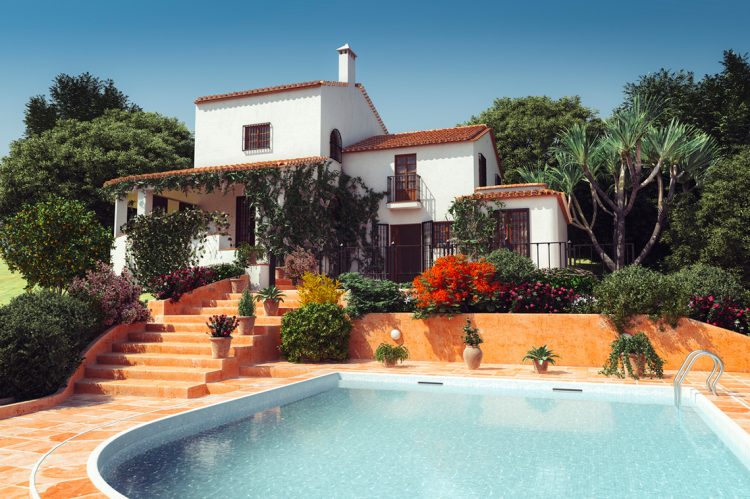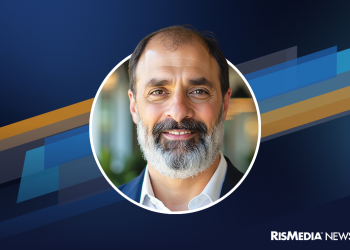The global wealthy are living in a state of adaptability to uncertainty, but quite bullish about ultra-luxury residential real estate, according to just-released research by Luxury Portfolio International® (LPI).
Data from the State of Luxury Real Estate 2023 encompasses the opinions of an aggregate 90% of the world’s affluent class, LPI stated.
According to a release, the study reveals that the global wealthy (UHNWI) are living in a state of adaptation to changing (and often unpredictable) circumstances, yet confident. The study also reveals that the outlook for worldwide wealth is positive ahead of the next five years.
While aware of potential headwinds from economic and geopolitical uncertainties–along with ever-growing concerns about climate change and the continued threat of COVID–they are resilient, the study says.
With both the transference of wealth and the overall growth of wealth in the top 5%, they are aware of the challenges, but are generally undaunted, as most saw their fortunes improve in late 2022 and expect 2023 to be an even stronger year.
The good news for the global luxury residential real estate market is that, within this segment of the market, prime property continues to be a solid investment in a time of upheaval with financial investments. Both owners and buyers expect values to rise in 2023, and that investment-property purchase expectations will remain at 2022 levels without diminishing.
Here are the key findings from the global study:
Affluent housing shortage continues
For the third consecutive year, the number of buyers is greater than the number of real estate sellers, as inventories continued to dwindle, especially in the luxury sector. This shortfall in the total number of available housing units impacts choice, and in turn, has impacted total sales as consumers wait for the ‘right’ home to purchase. While overall inventory began improving during the second half of 2022 as sales slowed, the need for new housing stock remains a priority. Although improving slightly, 2023 is still expected to have fewer sellers than buyers globally, continuing to feed demand for new markets and new developments.
Luxury homebuyers’ market behavior
The mid-2020 to mid-2021 luxury market buying frenzy pushed some prospective buyers out of contention in their most-desired markets. U.S. buyers have adapted to the situation by looking in secondary markets, and there are now hundreds more luxury markets today than in 2019. While 2023 is anticipated to mirror the real estate buying and selling intentions of 2022, consumers remain optimistic in their purchasing plans. So mid-2020, 2021, and half of 2022 remain outliers, with the research revealing that 2023-25 will be off these pandemic highs–but likely stronger than pre-COVID.
Where to buy
Market saturation and lack of inventory has spurred the creation of new luxury locales. The United States minted 199 new luxury places since the pandemic began (defined as locations with median prices exceeding $1 million). Idaho had the fastest growing luxury destinations in the United States between 2019 and 2022. Ketchum and Sun Valley are well-known destinations now joined by Harrison, Hailey, Driggs, Victor, Sagle, Hayden, Athol and McCall. This while familiar luxury spots in California, Washington, Colorado, Texas, Florida and the northeast I-95 corridor, also saw significant growth in listing price: Both the emerging and tried-and-true luxury markets have a number of things in common, including access to lifestyle amenities, in particular outdoor amenities, and they are near cultural centers.
The luxury homebuyers’ state of mind
According to the study, the luxury homebuyer recognizes that a recession is either here, or about to be here. They are also aware of the myriad of global issues, but it does not really bother them. They have instead turned to their significant personal strengths – financial, intellectual, emotional, and social – allowing them to build resilience against the turbulence of the global landscape. In simple terms, they are adapting to the circumstances. One of the offshoots of these adaptations is that luxury buyers are becoming more effective homebuyers. They are prioritizing key facts and figures about the quality of the investment (the facts) while considering the intangibles of the purchase (their feelings). To that end, real estate professionals that cater to reason over emotion (or vice-versa) are only doing half the job that luxury buyers need them to do. Consequently, the priorities for luxury buyers in 2023 is investment quality, both in the tangible (the right setting, a good investment) and the intangible (does it feel good).
When asked to rank their needs and wants in a competitive context (this or that) the hierarchy becomes clear:
- Quality of investment
- Beauty
- Family
- Good for the world
- Good for me
Certainly, each market and buyer will have their own sense of priority order, but as a global class, these factors are what matter most to them. And lastly, as it relates to mindset, the under-50-year-old buyer is more willing to purchase sight unseen and via online channels.
Ready to entertain, be out-and-about again
The study revealed that luxury homebuyers are resoundingly back in the swing of things when it comes to at-home entertainment. These individuals have a different mindset than their non-buying counterparts, as they are more likely than the average affluent consumer to have plans to attend a large-scale social event. The trend has been mostly steady since the summer of 2022, but there has been a notable uptick in cocktail parties, which may be an early indicator for networking and expanding-the-group social events. This furthermore mirrors an increase in luxury gift-giving.
Economic, political challenges not slowing down creation of global wealth
LPI stated that global wealth grew at 13% last year, with forecasts anticipating robust growth through the middle of the decade. As total wealth grows, the number of high- and ultra-high-net-worth individuals also climbs, reaching all-time highs. The millionaire cohort is expected to grow by 40%, to reach new highs of 87 million HNWI by 2026. The United States, China, United Kingdom, Canada, Australia, New Zealand, and India are experiencing the most growth in HNWI’s this year. Japan and European stalwarts France, Germany and Italy have experienced a decline.
City center remains the most desirable address
While the impact of COVID was an immediate desire for “personal space,” hence exponential demand for single-family dwellings, in particular, among the wealthy, the study revealed that 37% of luxury homebuyers expect to purchase in the city center, where investors outnumber primary homebuyers. This is a positive step, in particular, for areas such as New York City and London, which have come back strong since being seriously impacted during the pandemic.
This dynamic is predicted to cause investment-grade properties to come off the market more quickly while dwellers search for turnkey residences, the result being an increase in home prices for city center luxury properties, LPI says. Luxury buyers are interested in city living for a variety of benefits: nearby shopping, restaurants/night life and a shorter commute. What they will not sacrifice is the quality of schools (whether public or private) and access to parks and nature. In short, the city-center is “back” despite lingering doubts about COVID.
“The luxury homebuyer is arguably the most astute connoisseur of real estate in the world,” said Mickey Alam Khan, president of Luxury Portfolio International®. “The study underscores that they are highly attuned to the realities of the global financial and geopolitical landscape, yet luxury residential real estate remains a preferred destination for their wealth. The panorama of the ‘COVID boom’ is clearly behind us, with the latter half of 2022 ushering necessary market stability into 2023 and beyond.”
To view the full report, visit: https://www.luxuryportfolio.com/reports.












